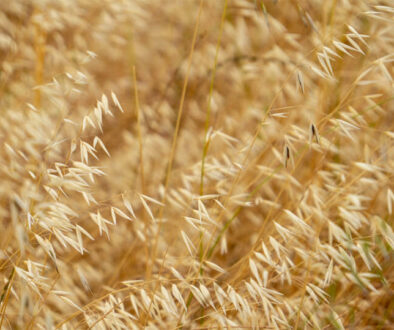September 2020 eNewsletter
A good news month
By Jason Skotheim, SaskBarley Chair
I hope you are all having a good month.
Overall, it’s good news to date for barley harvest and quality.
As of September 21, 72% of the Saskatchewan barley harvest was completed, according to Saskatchewan Agriculture. This is well ahead of the average for the past five years.
To date the quality of the malt barley harvested looks good, according to the CMBTC, with generally high test weights and plump kernels, low incidence of DON and limited chitting. The majority of protein samples to date have been in the 11-13.5% range and it looks like there will ample tonnage available for the domestic and the export market.
Since harvest is well on its way, we know many of you will start thinking of marketing. We are here to help. See article below from Chuck Penner on barley outlook in the current global environment.
Also below you will find an article on safely storing your grain this fall in order to prevent OTA (a potent mycotoxin that forms on wet grain). This is important, as we are all responsible for maintaining Canada’s reputation for producing top-quality crops – and we will ALL suffer the consequences of a failure to uphold these standards.
More good news this month – last week we officially announced a renewed agreement with the University of Saskatchewan’s Crop Development Centre to invest $2.7 million in barley breeding over the next five years. (This funding comes from us, Alberta Barley and the Manitoba Crop Alliance.) The last round of producer funding provided to the CDC saw the registration of two new malting varieties, one feed variety and one hulless variety. In the next five years we expect another three varieties to be released.
Finally, we will have announcements in coming weeks about our fall/winter events for 2020. Hope we will “see” some of you there.
Barley Outlook Well Balanced (For Now)
By: Chuck Penner, LeftField Commodity Research
The global barley market has become a lot more complicated than it used to be, with geopolitical tensions causing more trade obstacles compared to what used to be a fairly humdrum marketplace. Already a while ago, Canada was banned from exporting barley to Saudi Arabia and now China has essentially stopped buying Australian barley, adding another wrinkle to the outlook. Now, it’s a matter of re-jigging trade routes to adapt to the new reality.
Within Canada, there’s been a flurry of information lately about barley supplies. StatsCan’s latest production estimate (two weeks after the first one) showed the 2020 barley crop at 10.25 mln tonnes, just marginally lower than last year but well above the 5-year average of 8.75 mln tonnes. That large crop would be partly offset by a second straight year of low old-crop carryover but supplies are still quite comfortable. This part of the outlook seems fairly straightforward, although there are lingering questions about the impact of flooding (earlier) and frost (later) in parts of the prairies.

Domestic barley demand, especially for malt, doesn’t vary much from year to year, but there can be a few changes for feed barley. In 2019/20, the marketing year just finished, StatsCan showed a large jump in feed use, the main category of barley consumption, although some of that increase is simply caused by StatsCan’s calculation methods and may not accurately reflect actual feed consumption.
One other reason that feed barley use increased last year was the sharp drop in corn imports from the US. Back in 2018/19, tight supplies of Canadian barley and high feed prices coupled with cheap US corn had boosted Canadian corn imports sharply. Those corn imports (at least in western Canada) dropped by more than half in 2019/20 because of cheaper Canadian barley and a weak Canadian dollar. For 2020/21, the loonie has strengthened but corn futures have also risen. That will limit corn imports and strengthen domestic demand for barley.
Outside our borders, the outlook gets a little foggier. Barley crops in major exporting countries this year have been extremely variable. Serious crop challenges in France and Argentina have reduced yields and cut into their export capabilities. In the Black Sea region, the Russian crop is up slightly from last year while Ukraine’s barley production is lower. At the other end of the spectrum, Australian barley production is estimated to be up 25% from last year. Even aside from geopolitical disruptions, these changes in barley production will cause shifts in export patterns.
The remaining piece of the outlook is export demand. The Saudi market remains relatively stable but Canada is shut out of that market anyway. A larger Australian crop is looking for a home, with some of that likely headed toward Saudi Arabia.
China is the largest question mark for Canadian exports. Chinese imports of other feedgrains have been very strong lately but barley imports seem to have lagged, even before the country shut out Australian barley. Barley imports could strengthen in the coming months as Chinese corn prices have continued to rise but barley would still need to compete with other feedgrains such as sorghum. Even if Chinese barley demand remains on the small side, the absence of Australia will open the door for more barley from Canada but also other origins, including the Black Sea and France.

In 2019/20, China wasn’t the only destination for Canadian barley. Volumes headed to Japan also rose considerably due to short supplies of Australian barley. Of course, that situation has changed in 2020/21 with a much bigger Australian crop and that barley will be competing aggressively in Japan, looking to regain lost market share. On balance, the gains Canada makes in China could be offset by a reduction in sales to Japan. We are getting some signals of strong barley exports to start the 2020/21 marketing year, which adds a positive tone.
The bottom line measure for the Canadian barley market is ending stocks. This year, the combination of large supplies once again, more normal domestic feed use and a slight increase in exports could raise 2020/21 ending stocks to 1.55 mln tonnes. That’s up considerably from 0.96 mln in 2019/20 but is only slightly higher than the 5-year average and is hardly considered heavy.
As the season evolves and some unknowns become known, especially in the export market, this outlook will undoubtedly need to be tweaked. But based on current information, a fairly stable price outlook is projected for 2020/21.
Reduce Mycotoxins to Keep it Clean
Help maintain Canada’s reputation for quality cereals and protect your investments by keeping Ochratoxin A (OTA) out of your stored grain.
By: Keep It Clean staff
OTA is a potent mycotoxin produced by Penicillium verrucosum, a naturally occurring soil fungus, that can form on stored grain. Unlike deoxynivalenol (also known as DON or vomitoxin) which is formed in the field, OTA forms exclusively in storage in wet grain or when water comes in contact with grain.
Prevention of even small pockets of OTA-contaminated grain during storage is the only way that it can be managed to protect health and prevent product recalls. Follow these Keep it Clean safe storage protocols to mitigate the risk:
- Keep bins and grain handling equipment clean, thoroughly cleaning dust and debris between grain lots.
- Ensure crops are harvested or dried to a safe level for storage.
- Cool the grain quickly to well below 10°C and keep it cool for as long as possible to minimize condensation in the bin. Even fine droplets of condensate can allow the fungus to grow.
Visit keepingitclean.ca/cereals/storage for further information on OTA and how it forms, along with visual examples of OTA formation at critical points of handling and storage.
By taking steps to prevent the formation of OTA in stored grain, you can protect your investments and help keep markets open for all.





